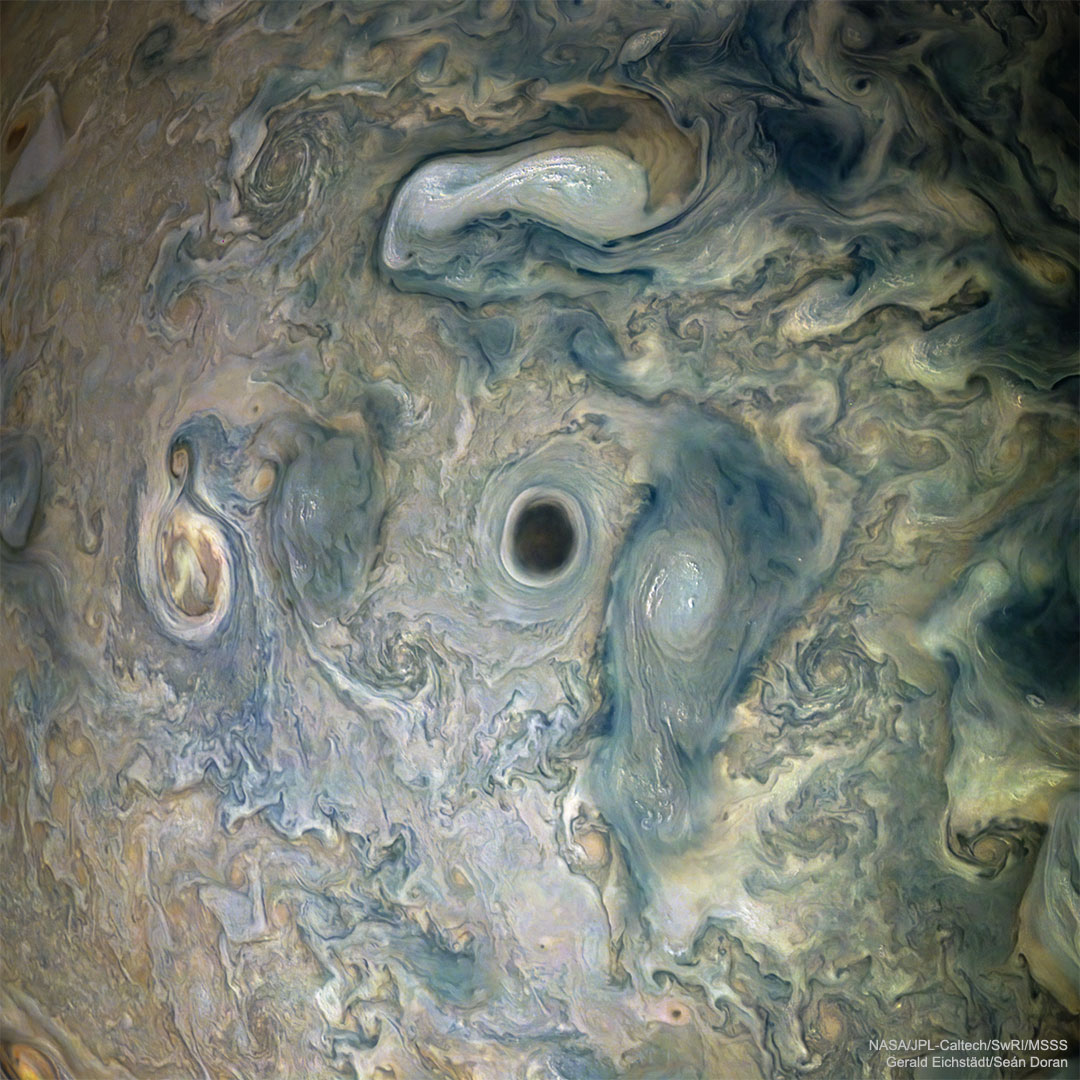Nombre total de pages vues
24/06/2025
SANTé/MEDECINE - Procédé révolutionnaire dans la lutte contre le cancer 5/6 : Les défis à relever
ASTRONOMY - In the Center of Spiral Galaxy M61
2025 June 24
Image Credit: NASA, ESA, Hubble, ESO; Processing & Copyright: Robert Gendler
Explanation: Is there a spiral galaxy in the center of this spiral galaxy? Sort of. Image data from the Hubble Space Telescope, the European Southern Observatory, and smaller telescopes on planet Earth are combined in this detailed portrait of face-on spiral galaxy Messier 61 (M61) and its bright center. A mere 55 million light-years away in the Virgo Cluster of Galaxies, M61 is also known as NGC 4303. It's considered to be an example of a barred spiral galaxy similar to our own Milky Way. Like other spiral galaxies, M61 also features sweeping spiral arms, cosmic dust lanes, pinkish star forming regions, and young blue star clusters. Its core houses an active supermassive black hole surrounded by a bright nuclear spiral -- infalling star-forming gas that itself looks like a separate spiral galaxy.
23/06/2025
LA TERRE VUE DU CIEL - L'Europe sous la neige
SANTé/MEDECINE - Procédé révolutionnaire dans la lutte contre le cancer 4/6 : Un futur prometteur pour la médecine
ASTRONOMY - W5: Pillars of Star Formation
Image Credit: NASA, WISE, IRSA; Processing & Copyright : Francesco Antonucci
Explanation: How do stars form? Images of the star forming region W5 like those in the infrared by NASA's Wide Field Infrared Survey Explorer (WISE, later NEOWISE) satellite provide clear clues with indications that massive stars near the center of empty cavities are older than stars near the edges. A likely reason for this is that the older stars in the center are actually triggering the formation of the younger edge stars. The triggered star formation occurs when hot outflowing gas compresses cooler gas into knots dense enough to gravitationally contract into stars. In the featured scientifically colored infrared image, spectacular pillars left slowly evaporating from the hot outflowing gas provide further visual clues. W5 is also known as Westerhout 5 (W5) and IC 1848. Together with IC 1805, the nebulas form a complex region of star formation popularly dubbed the Heart and Soul Nebulas. The featured image highlights a part of W5 spanning about 2,000 light years that is rich in star forming pillars. W5 lies about 6,500 light years away toward the constellation of Cassiopeia.
22/06/2025
SANTé/MEDECINE - Procédé révolutionnaire dans la lutte contre le cancer 3/6 : Les avantages de cette révolution
ASTRONOMY - A Berry Bowl of Martian Spherules
2025 June 22
Image Credit: NASA, JPL, Curiosity Rover
Explanation: How were these unusual Martian spherules created? Thousands of unusual gray spherules made of iron and rock and dubbed blueberries were found embedded in and surrounding rocks near the landing site of the robot Opportunity rover on Mars in 2004. To help investigate their origin, Opportunity found a surface dubbed the Berry Bowl with an indentation that was rich in the Martian orbs. The Berry Bowl is pictured here, imaged during rover's 48th Martian day. The average size of a Martian blueberry rock is only about 4 millimeters across. By analyzing a circular patch in the rock surface to the left of the densest patch of spherules, Opportunity obtained data showing that the underlying rock has a much different composition than the hematite rich blueberries. This information contributes to the growing consensus that these small, strange, gray orbs were slowly deposited from a bath of dirty water.
19/06/2025
SANTé/MEDECINE - Procédé révolutionnaire dans la lutte contre le cancer - 2/6 : Une découverte qui change tout
ASTRONOMY - NGC 3521: Galaxy in a Bubble
Image Credit & Copyright: Vikas Chander
Explanation: Gorgeous spiral galaxy NGC 3521 is a mere 35 million light-years away, toward the northern springtime constellation Leo. Relatively bright in planet Earth's sky, NGC 3521 is easily visible in small telescopes but often overlooked by amateur imagers in favor of other Leo spiral galaxies, like M66 and M65. It's hard to overlook in this colorful cosmic portrait though. Spanning some 50,000 light-years the galaxy sports characteristic patchy, irregular spiral arms laced with dust, pink star forming regions, and clusters of young, blue stars. The deep image also finds NGC 3521 embedded in fainter, gigantic, bubble-like shells. The shells are likely tidal debris, streams of stars torn from satellite galaxies that have undergone mergers with NGC 3521 in the distant past.
ASTRONOMY - Jupiter Abyss
2024 November 3 Jupiter Abyss Image Credit: NASA , Juno , SwRI , MSSS ; Processing & License : Gerald Eichstädt & Sean Dor...

-
2022 September 26 All the Water on Planet Earth Illustration Credit: Jack Cook, Adam Nieman, Woods Hole Oceanographic Institution ; Data ...
-
2025 May 11 The Surface of Venus from Venera 14 Image Credit: Soviet Planetary Exploration Program , Venera 14 ; Processing & Copyri...









